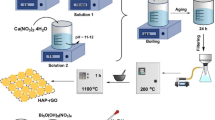Abstract
The existence of residual organic dyes in water resources or wastewater treatment systems with industrial wastewater as the main source is a major environmental problem that is difficult to solve. Three eco-friendly and water-resistant supramolecular compounds were prepared using BHMTA (BHMTA = N-benzyl hexamethylenetetramine bromide) as a template. In the limited environment of supramolecules, organic dyes are efficiently removed in water. Compound {[BHMTA]2 [β-Mo8O26]·[H3O+]2·[H2O]3} (3) can achieve high efficiency by capturing more than 90% of methylene blue dye content even at very low concentrations (1 × 10−5 mol/L). The effects of the amount of adsorbent, temperature, and acid and alkali on the adsorption of organic dyes were systematically studied. The adsorption behavior of compound 3 fits well with the quasi-second-order kinetic model and the Langmuir model. The maximum adsorption capacity of methylene blue (MB) (950 mg/g) is higher than the most reported adsorbent. More importantly, compound 3 still had a higher adsorption effect after three cycles. These results indicate that the compound treatment wastewater has potential application prospects.









Similar content being viewed by others
References
C. F. Liu, C. Y. Liu, Z. G. Ren, and J. P. Lang (2019). Eur. J. Inorg. Chem. 2019 (13), 1816–1824.
Z. Aksu (2001). Biochem. Eng. J. 7, 79–84.
D. M. Chen, W. Shi, and P. Cheng (2015). Chem. Commun. 51, 370–372.
G. Crini (2006). Bioresour. Technol. 97, 1061–1085.
T. T. Li, Y. M. Liu, T. Wang, Y. L. Wu, Y. L. He, R. Yang, and S. R. Zheng (2018). Microporous Mesoporous Mater. 272, 101–108.
S. Chen, J. Zhang, C. Zhang, Q. Yue, Y. Li, and C. Li (2010). Desalination 252, 149.
Y. X. Shi, W. X. Li, H. H. Chen, D. J. Young, W. H. Zhang, and J. P. Lang (2017). Chem. Commun. 53, 5515–5518.
M. Rafatullah, O. Sulaiman, R. Hashim, and A. Ahmad (2010). J. Hazard. Mater. 177, 70–80.
Z. F. Zhu, Y. L. Bai, L. L. Zhang, D. F. Sun, J. H. Fang, and S. R. Zhu (2014). Chem. Commun. 50, 14674.
M. Mon, R. Bruno, E. Tiburcio, P. E. Casteran, J. Ferrando-Soria, D. Armentano, and E. Pardo (2018). Chem. Eur. J. 24, 17712–17718.
Y. Xu, T. Liu, Y. Zhang, F. Ge, R. M. Steel, and L. Sun (2017). J. Mater. Chem. A 5, 12001–12014.
C. H. Wang, J. Kim, M. Kim, H. Lim, M. Zhang, J. You, J. Yun, Y. Bando, J. S. Li, and Y. Yamauchi (2019). J. Mater. Chem. A 7, 13743–13750.
L. Li, X. L. Liu, M. Gao, W. Hong, G. Z. Liu, L. Fan, B. Hu, Q. H. Xia, L. Liu, G. W. Song, and Z. S. Xu (2014). J. Mater. Chem. A 2, 1795.
P. F. Hao, Y. R. Qiao, T. L. Yu, J. J. Shen, F. Liu, and Y. L. Fu (2016). RSC Adv. 6, 53566.
Y. Akköz, R. Coşkun, and A. Delibaş (2019). J. Mol. Liq. 287, 110988.
T. Ahamad, M. Naushad, G. E. Eldesoky, S. I. Al-Saeedi, A. Nafady, N. S. Al-Kadhi, A. H. Al-Muhtaseb, A. A. Khan, and A. Khan (2019). J. Mol. Liq. 282, 154–161.
S. Joshi, V. K. Garg, N. Kataria, and K. Kadirvelu (2019). Chemosphere 236, 124280.
H. J. Du, C. H. Wang, Y. Li, W. L. Zhang, M. M. Xu, S. M. Li, Y. B. Lu, Y. Y. Niu, and H. W. Hou (2015). Microporous Mesoporous Mater. 214, 136–142.
C. H. Wang, H. J. Du, Y. B. Lu, M. M. Xu, B. L. Wu, Y. Y. Niu, and H. W. Hou (2016). Cryst. Growth Des. 16 (5), 2487–2491.
Y. Y. Li, F. R. Wang, Z. Y. Li, Z. N. Yan, and Y. Y. Niu (2019). ACS Omega 4, 8926–8934.
M. M. Xu, Y. Li, L. J. Zheng, Y. Y. Niu, and H. W. Hou (2016). N. J. Chem. 40, 6086–6092.
M. H. Wu, G. C. Yang, and Z. X. Chen (2000). Synth. Commun. 30, 3127–3131.
M. Huo, W. B. Yang, H. L. Zhang, L. Zhang, J. Z. Liao, L. Lin, and C. Z. Lu (2016). RSC Adv. 6, 111549.
M. Z. Wu, J. Y. Shi, P. Y. Chen, L. Tian, and J. Chen (2019). Inorg. Chem. 58, 3130–3136.
M. K. Wu, F. Y. Yi, Y. Fang, X. W. Xiao, S. C. Wang, L. Q. Pan, S. R. Zhu, K. Tao, and L. Han (2017). Cryst. Growth Des. 17, 5458–5464.
G. Sposito (1982). Soil Sci. Soc. Am. J. 46 (6), 1147–1152.
G. Sposito (1980). Soil Sci. Soc. Am. J. 44 (3), 652–654.
J. A. Mead (1981). Soil Res. Am. J. 19 (3), 333–342.
X. Y. Luan, H. Zheng, K. Yang, and Q. Y. Tang (2020). Dalton Trans. 07 (2), 1602–1671.
R. Liu, C. Y. Wang, and X. X. Hang (2016). N. Chem. Mater. 44 (6), 110.
Acknowledgements
Research efforts in the Niu’s Group are supported by the National Natural Science Foundation of China (No. 21671177).
Author information
Authors and Affiliations
Corresponding author
Ethics declarations
Conflict of interest
The authors declare no competing financial interests.
Additional information
Publisher's Note
Springer Nature remains neutral with regard to jurisdictional claims in published maps and institutional affiliations.
Supplementary Information
Below is the link to the electronic supplementary material.
Rights and permissions
About this article
Cite this article
Wang, X., Qiao, X., Li, Y. et al. Preparation of Water-Resistant Supramolecular Compounds ({[BHMTA]2 [CdI4]} (1), {[BHMTA]2 [Pb2I6]}n (2) and {[BHMTA]2 [β-Mo8O26]·[H3O+]2·[H2O]3}(3) (BHMTA = N-benzylhexamethylenetetramine bromide) and the Application in the Removal of Methylene Blue in Aqueous Solution. J Clust Sci 33, 665–673 (2022). https://doi.org/10.1007/s10876-021-01988-8
Received:
Accepted:
Published:
Issue Date:
DOI: https://doi.org/10.1007/s10876-021-01988-8




